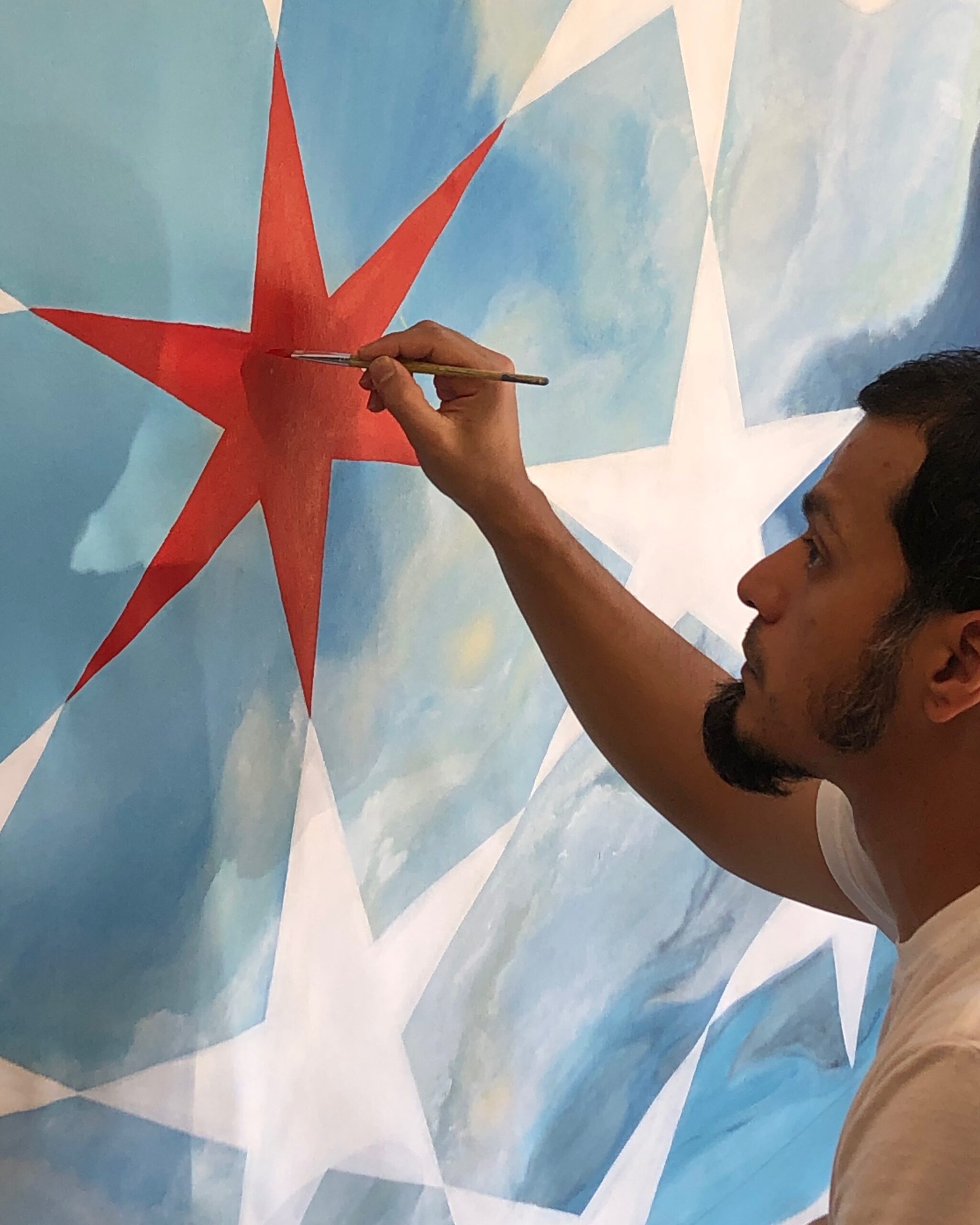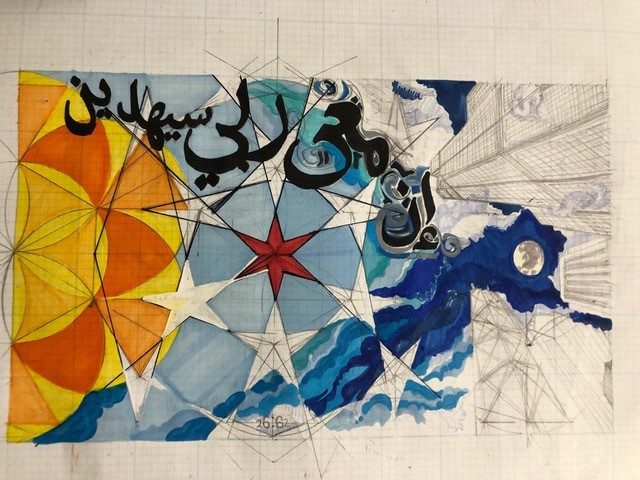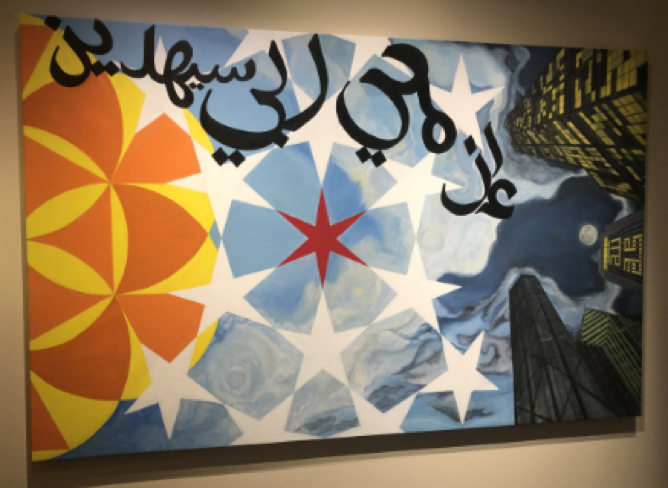As part of their public history class, DePaul University students Anne Crowe, Patrick Elliott, Joshua Khalilian, and Andrea Weiss-Tracy explore the life and work of Chicago artist Trinidad Castillo in this blog post. The Chicago History Museum commissioned Castillo to paint a mural for its exhibition American Medina: Stories of Muslim Chicago. The students’ course was taught by Peter T. Alter, the Museum’s chief historian, director of the Studs Terkel Center for Oral History, and curator of American Medina.
Native Chicagoan Trinidad Castillo is an artist with a love of letters and calligraphy whose work is often rooted in his Islamic faith. He grew up in Horner Park, which is part of the North Center community area, and later moved to the Southwest Side.

Trinidad Castillo paints his mural for American Medina. Photograph courtesy of Castillo
As a youth in the 1990s, Castillo attended arts programs at the Southwest Youth Collaborative (SWYC), a local community organization that no longer exists. At SWYC, he became deeply rooted in hip-hop culture, art, and the history of the Southwest Side. In these programs, he learned “how to make the community beautiful” through art and use that art to “celebrate what we look like as a community.”
Castillo later returned to SWYC to work as a youth programs coordinator, leading break dancing and mural arts initiatives. His spiritual journey began after he developed a deep connection with a Muslim coworker. This friendship greatly inspired him, driving him to learn more about the faith, and eventually leading to his conversion.
In the 2010s, shortly after his conversion, Castillo and two other SWYC representatives visited Palestine on the Hip-Hop Bus Stop Tour, giving performances and leading workshops for Palestinian youth. He found the entire experience eye-opening as he saw the “hard truth,” witnessing disheartening situations of poverty and pain in Palestine. Castillo also began to develop his love for Arabic calligraphy while there.

Castillo’s sketch for his mural, which incorporates traditional Islamic elements with ones that are distinctly Chicago, such as the six-pointed star from its flag and the skyline. Photograph courtesy of Castillo
The Chicago Muslim Oral History Project is the foundation for the American Medina exhibition, with roughly 150 interviews conducted to date and about forty of those featured in the exhibition. Eventually, all interview audio and transcripts will be available through the Museum’s website. In the fall of 2019, project curatorial assistant Mona Askar conducted an oral history interview with Castillo.

Castillo’s finished work, American Medina. Image by CHM staff
During the interview, he described how he embraced the use of Islamic-inspired geometric patterns in the American Medina mural. These “geometric subgrids,” he told Askar, “flourish from the basics of the circle.” Castillo also incorporated verse sixty-two of the Ash-Shu’arâ’ chapter of the Quran, the holy book of Islam. Translated from the original Arabic, it reads “Surely my Lord is with me and He will guide me through.” The Prophet Moses said this to his followers as they fled from the Egyptian pharaoh’s army, and to Castillo, this verse means that his faith will guide him through his life in Chicago. Through this mural and his personal journeys, Castillo illustrates how his faith and life experiences have influenced his artistic and religious identities in Chicago, the American Medina.